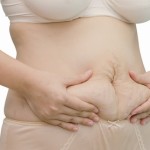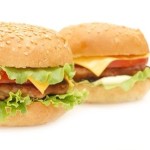BROWN FAT vs. WHITE FAT IN FIGHT AGAINST OBESITY
BROWN FAT vs. WHITE FAT IN FIGHT AGAINST OBESITY
By DR SALLY NORTON
A new study* has given more evidence to support the idea that brown fat could help our fight against obesity and diabetes.
Whilst we all know that ‘brown is best’ when it comes to bread, pasta and rice, did you know that your body is made up of both brown and white fat and brown is better than white here too?

The science bit
There are two types of fat cells (or adipocytes) in the body – brown and white. The main difference between the two is that unlike white fat cells which primarily act to store fat, brown fat cells seem to have some positive links to muscle cells and are involved in generating heat from fat, so are found in both hibernating animals and babies who are unable to control their body temperature by shivering.
It wasn’t clear until now whether brown fat persisted into adulthood but a recent study using MRI scanners has further confirmed the presence of brown fat in adults. Another study showed that this adult brown fat was still active – in that it was able to burn energy in cold conditions with the aim of warming us up.
The scientific, and weight loss, interest in this lies in the crucial fact that if we can increase the amount of brown fat in our bodies we may be able to burn more energy.
Investigators in the field report that 50g of white fat stores more than 300 kilocalories of energy, while 50g of brown fat may BURN up to 300 kilocalories a day. Which would you prefer?
So it is possible to boost brown fat?
Well, as brown fat is important to help warm us up when we are cold, it may not be that surprising then that shivering seems to stimulate the transformation of white into brown fat. Another study has shown that we may be able to change white fat cells into cells closely resembling brown fat by exercise too; yet another reason to keep active!
In this latest study, men who were either in normal temperatures or exposed to mild cold for eight hours were studied, looking at their metabolism (energy-burning) and their blood sugar and insulin levels as a reflection of their diabetes risk. Researchers found that, when exposed to mild cold, brown fat increased energy expenditure, burning calories, and blood sugar was regulated more effectively.

There is some evidence, too, that our poor diet may be contributing to a reduction in our brown fat, which could be very bad news for our metabolism. A study on mice who were fed a high-fat and sugar diet (equivalent to our increasingly consumed ice-cream, doughnuts and the like) showed that their brown fat underwent changes to make it more like white fat – i.e. more of a fat-storing foe than a fat–burning friend. In addition, the researchers linked these changes to the development of a pre-diabetes state.
So what does this all mean?
Once more it seems that our body is much cleverer than we give it credit for – and could help us if we work with it, rather than against it. A lot more investigation is needed into this exciting new area of obesity research before we know whether we can really manipulate these discoveries to our advantage. However, for the time being, two things seem clear, and fit in with what we know already:
1. Exercise is good – it may boost our brown fat as well as having multiple other benefits. So whilst the calorie burn of exercise may not be that great at the time, if we develop a higher level of brown fat then we increase our fat-burning capability long-term – even when we’re sitting still!
2. Over-eating of food laden with both sugar and fat (i.e. processed food not proper food) is bad for yet another reason. It may be producing a very vicious circle – the more rubbish food we eat, the more we destroy our ability to burn it off and the more we increase our tendency to store it instead.
Also, a final thought for those of you holidaying in the UK. If, like me, you generally shun our chilly waters and refuse to budge from the beach, it may be time to take the plunge. Braving the British seas may help shiver your brown fat levels up – and your weight down!

About the Author:
Dr Sally Norton is a Weight Management Expert and founder of Vavista.com
*References:
Shimizu I, Aprahamian T, Kikuchi R, Shimizu A, Papanicolaou KN, Maclauchlan S, Maruyama S, Walsh K. Vascular rarefaction mediates whitening of brown fat in obesity. J Clin Invest. 2014 Apr
J Clin Invest. 2012 Feb. Ouellet V, Labbé SM, Blondin DP, Phoenix S, Guérin B, Haman F, Turcotte EE, Richard D, Carpentier AC. Brown adipose tissue oxidative metabolism contributes to energy expenditure during acute cold exposure in humans
Cell Metab. 2014 Mar. BAT Thermogenesis: Linking Shivering to Exercise. Virtanen KA.
Adipocyte. 2014 Jan. The origin and definition of brite versus white and classical brown adipocytes. Rosenwald M, Wolfrum C.
Endocrinology. 2013 Sep. White, brown, beige/brite: different adipose cells for different functions? Giralt M(1), Villarroya F.
J Clin Invest. 2012 Feb. Brown adipose tissue oxidative metabolism contributes to energy expenditure during acute cold exposure in humans. Ouellet V, Labbé SM, Blondin DP, Phoenix S, Guérin B, Haman F, Turcotte EE, Richard D, Carpentier AC.
Cell Metab. 2014 Feb Irisin and FGF21 are cold-induced endocrine activators of brown fat function in humans. Lee P, Linderman JD, Smith S, Brychta RJ, Wang J, Idelson C, Perron RM, Werner CD, Phan GQ, Kammula US, Kebebew E, Pacak K, Chen KY, Celi FS.
Chen YC, Cypess AM, Chen YC, Palmer M, Kolodny G, Kahn CR, Kwong KK. Measurement of human brown adipose tissue volume and activity using anatomic MR imaging and functional MR imaging. J Nucl Med. 2013 Sep
Drubach LA, Palmer EL 3rd, Connolly LP, Baker A, Zurakowski D, Cypess AM. Pediatric brown adipose tissue: detection, epidemiology, and differences from adults. J Pediatr. 2011 Dec
